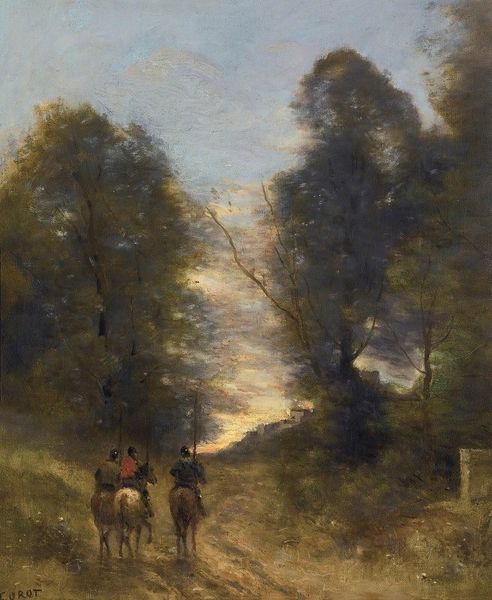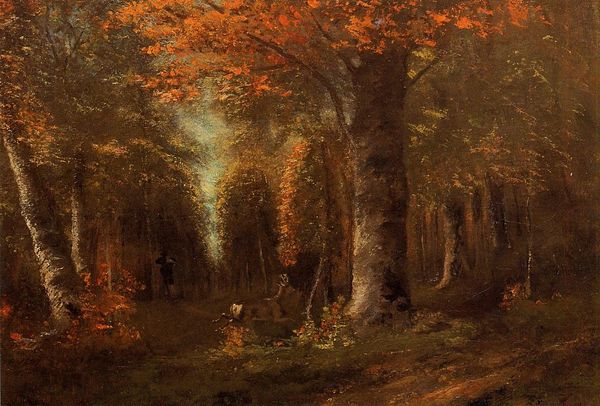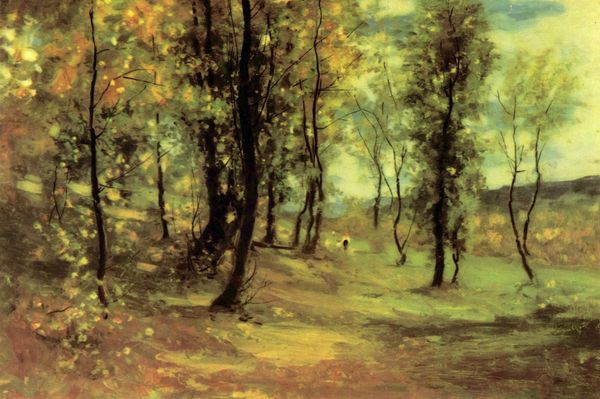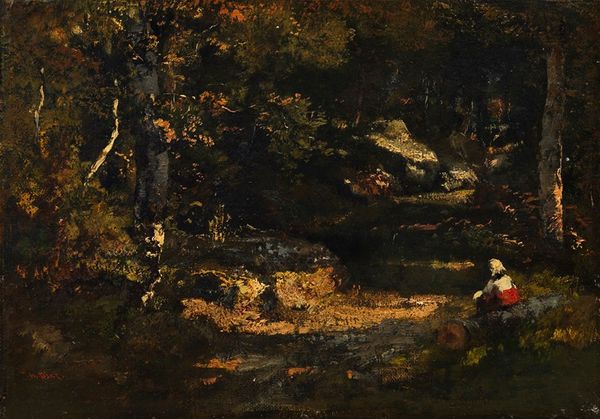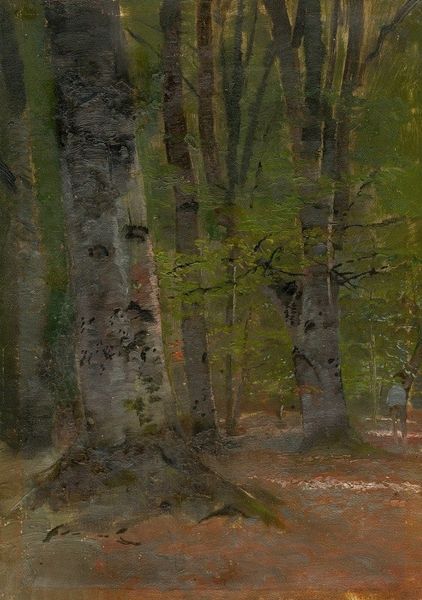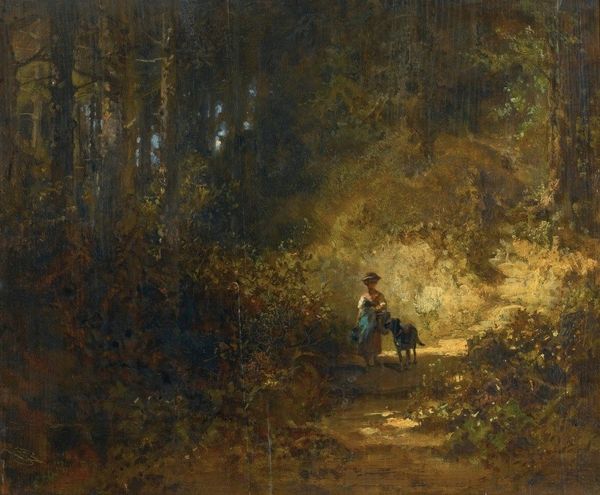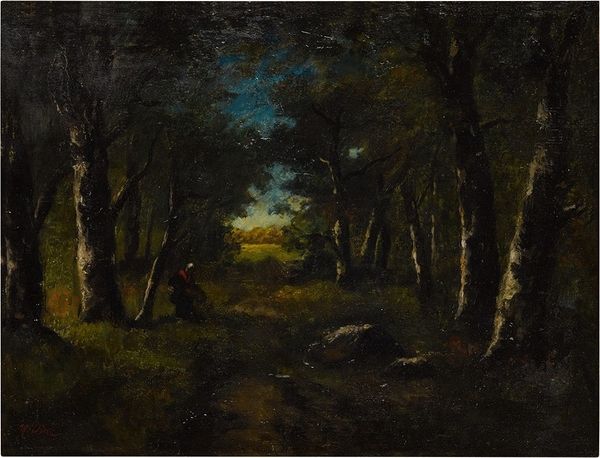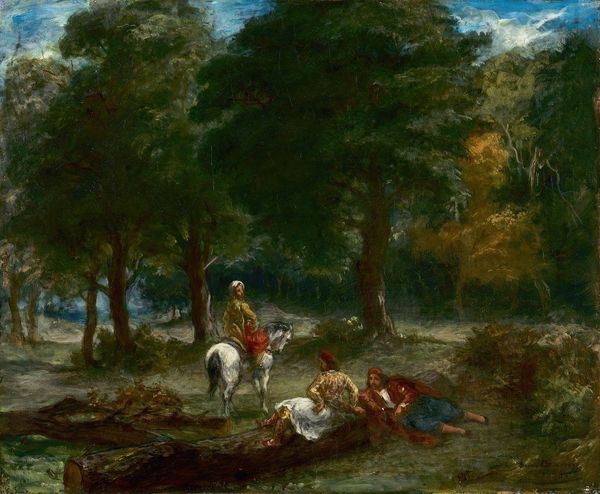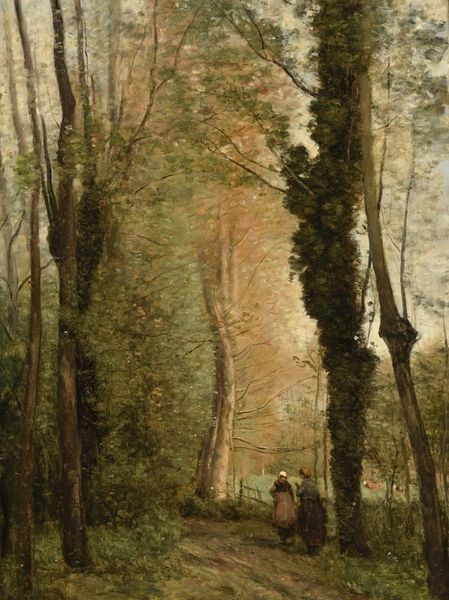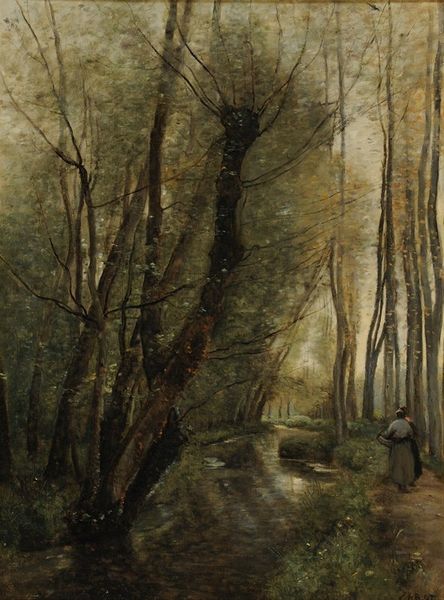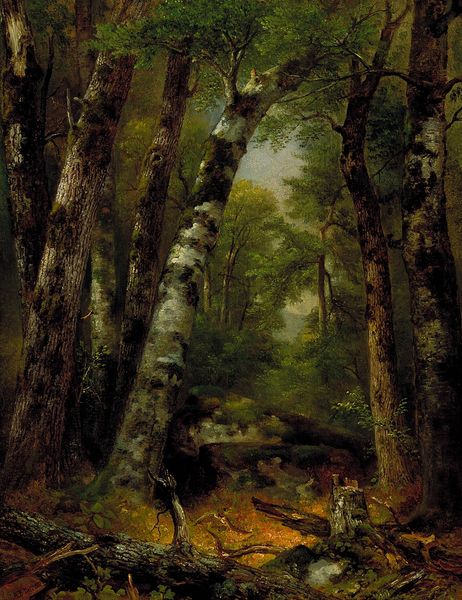
Copyright: Public domain
Editor: Toulouse-Lautrec's "Prick and Woodman," painted in 1882 with oil on canvas. It’s an intriguing snapshot of a rider and another figure in the woods. The textures in the paint itself seem so heavy and deliberate... What can you tell me about the social context of making a piece like this? Curator: It’s fascinating to consider Lautrec's relationship to labor here. Look at the stark contrast between the rider, presumably of means, and the woodman. Lautrec is acutely aware of the power dynamics inherent in portraying these figures. How does the very application of the impasto oil paint contribute to that narrative, highlighting the materiality and means of artistic production? Editor: I see that – the way the rider’s uniform is given this rich, built-up texture, a density the woodman doesn't have... almost as if the materiality of his clothing represents social capital? Is Lautrec critiquing the consumption habits or societal structure of his time? Curator: Precisely! Consider the accessibility, or lack thereof, of the materials themselves – high-quality oil paints, canvases – relative to the woodman's tools. Who has the power to create, to depict, to consume? Is the painting even erotic in this context? It’s possible that Lautrec uses these raw materials as an opportunity to dissect the socioeconomic disparities of the era and lay them bare through his artistry. Editor: That really shifts how I see the composition, thinking about material access as another layer of representation in the work. It also questions what is truly 'erotic' and why this depiction in itself can become exploitive, based on who gets represented. Curator: Absolutely. Understanding art as a product of material conditions allows us to examine power structures, not just aesthetic choices, bringing new perspectives on consumption and social relations within it.
Comments
No comments
Be the first to comment and join the conversation on the ultimate creative platform.
